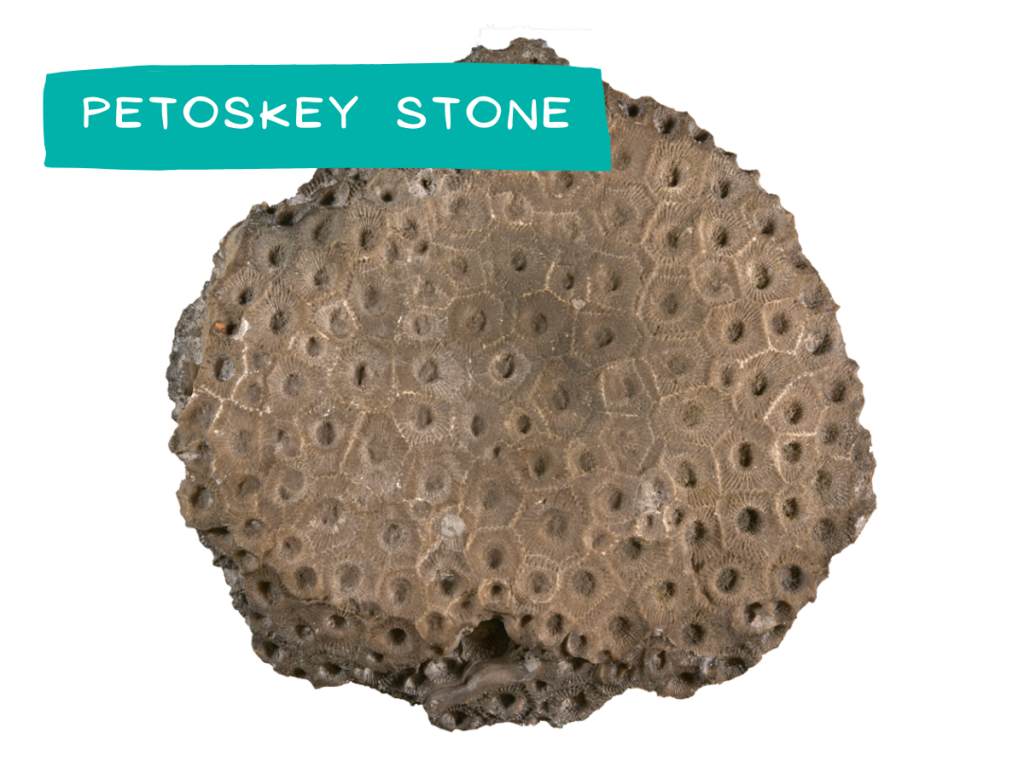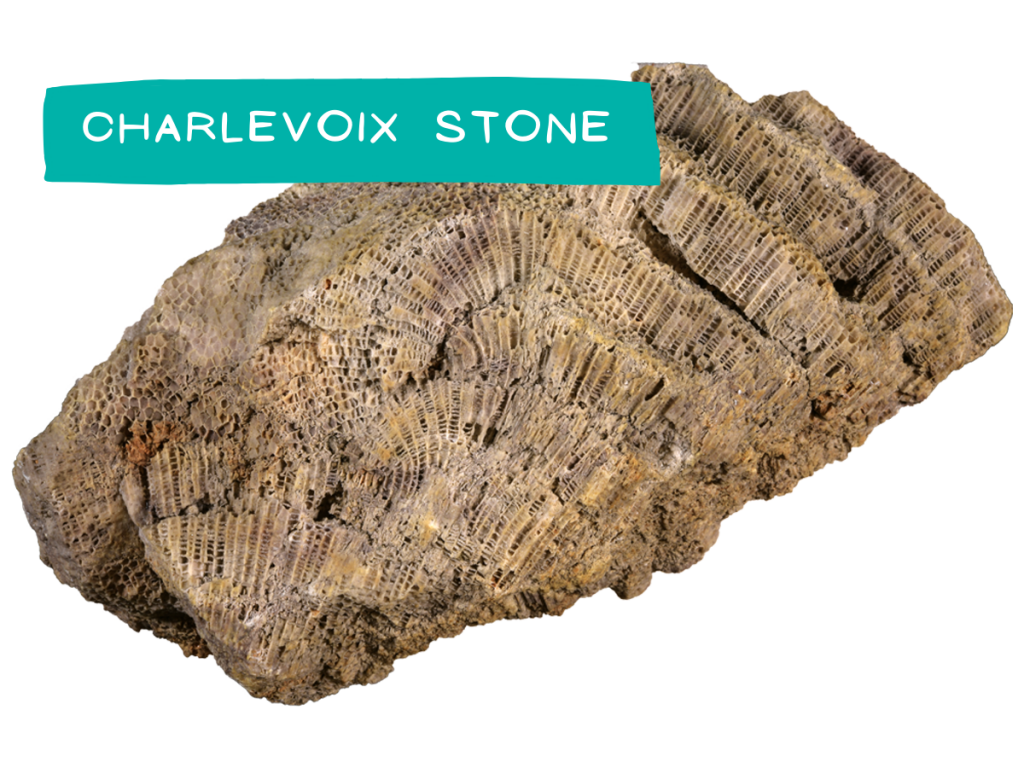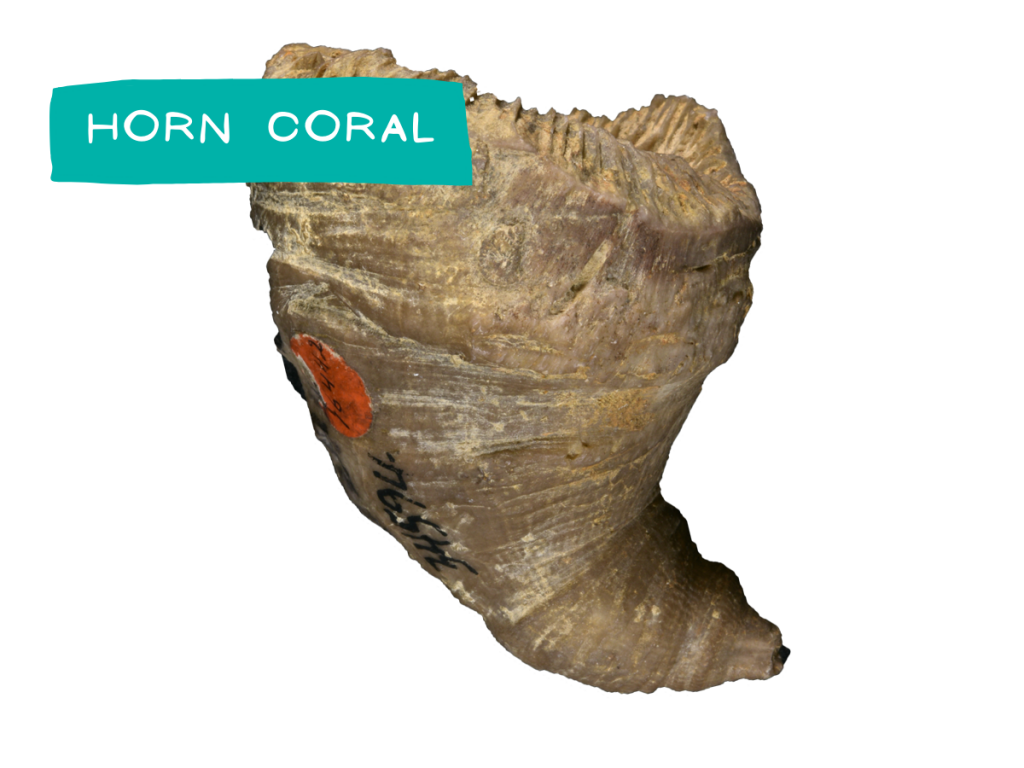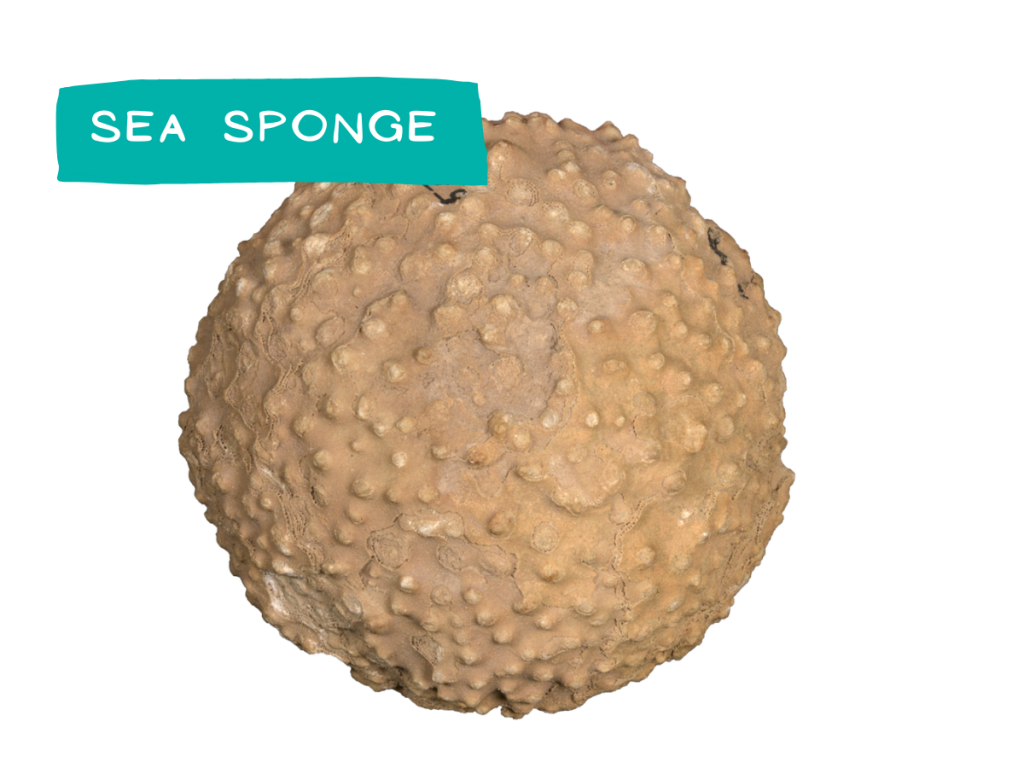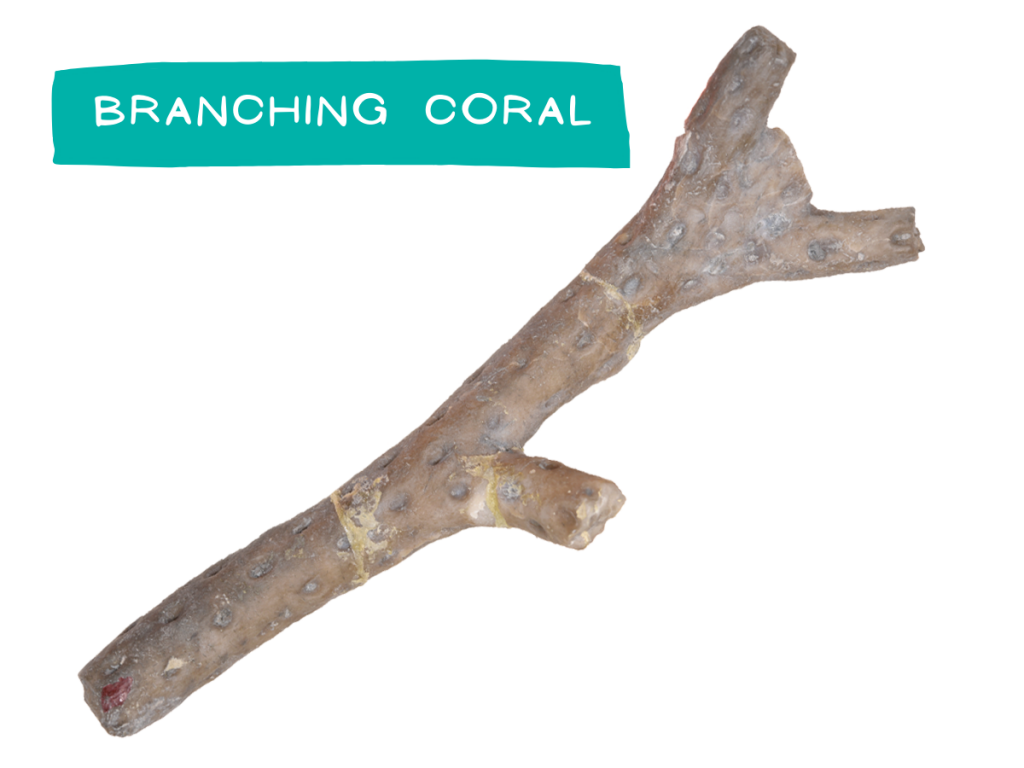
Coral-Like Animals
Corals were a common component of ancient life in Michigan. There are many types of corals or animals that look like corals – like bryozoans (moss-animals) and stromatoporoids (sponges). These animals often live in colonies but sometimes are solitary animals.
Using the pictures below, find the closest match to your fossil. Once you have, click the image to learn more about your fossil and find some helpful identification tips!
Petoskey Stone (Hexagonaria percarinatum)
Middle Devonian (393 – 382 million years ago)
Hexagonaria, better known as ‘Petoskey stones,’ are fossils of a colonial coral that lived during the Devonian period in the American Midwest, Canada, Germany, England, and parts of Asia. Its scientific name means ‘six sided,’ referring to the well known star shaped features on its surface.
Identification Tips
1. Several star-like features surrounding a central pillar on the surface of the stone
2. Large unevenly shaped hexagonal openings (corallites) with thin lines radiating from the pillar, like bike spokes – making a sunburst or star-shaped pattern
3. Often grow in small dome shapes that when weathered down show the star-shaped pattern on all sides.
See a 3D Model of the Colonial Coral
Doesn’t look exactly like what you found? Explore more 3D models of related animals (Order Rugosa, Phylum Cnidaria)

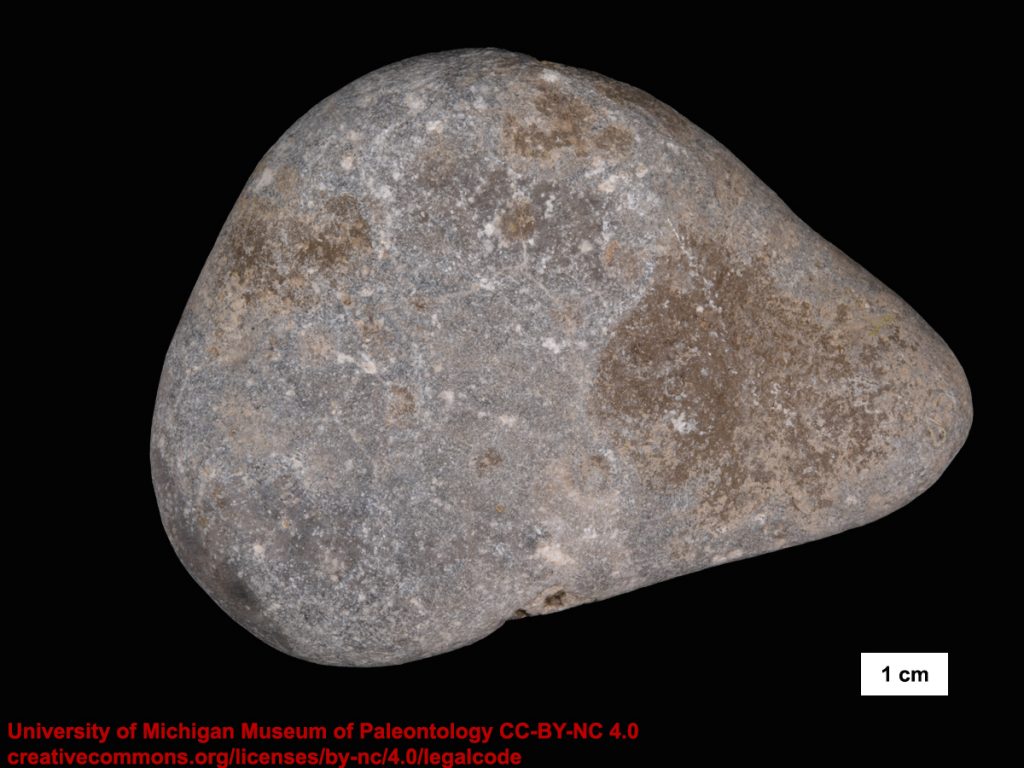
Beachcombers may find this coral with a very smooth surface, despite its rough appearance, due to erosion from glaciers and lake water.
Charlevoix Stone (Favosites)
Middle Devonian (393 – 382 million years ago)
Favosites, also known as ‘Charlevoix stones’, favosite, or honeycomb corals, are fossils of a colonial coral that lived from the Ordovician to the Permian (450-251 million years ago). Although we have species that are specific to Michigan, this fossil coral can be found worldwide.
Identification Tips
1. Series of boxes that build upon one another with horizontal bars called tabulae. These can be seen in the side view of the specimen if it’s broken or weathered
2. Closely packed hexagonal openings (corallites) that are sometimes empty or filled with mud
3. Often grow in a dome shape that when weathered show the internal box structures.
See a 3D Model of the Colonial Coral
Doesn’t look exactly like what you found? Explore more 3D models of related animals (Order Tabulata, Phylum Cnidaria).

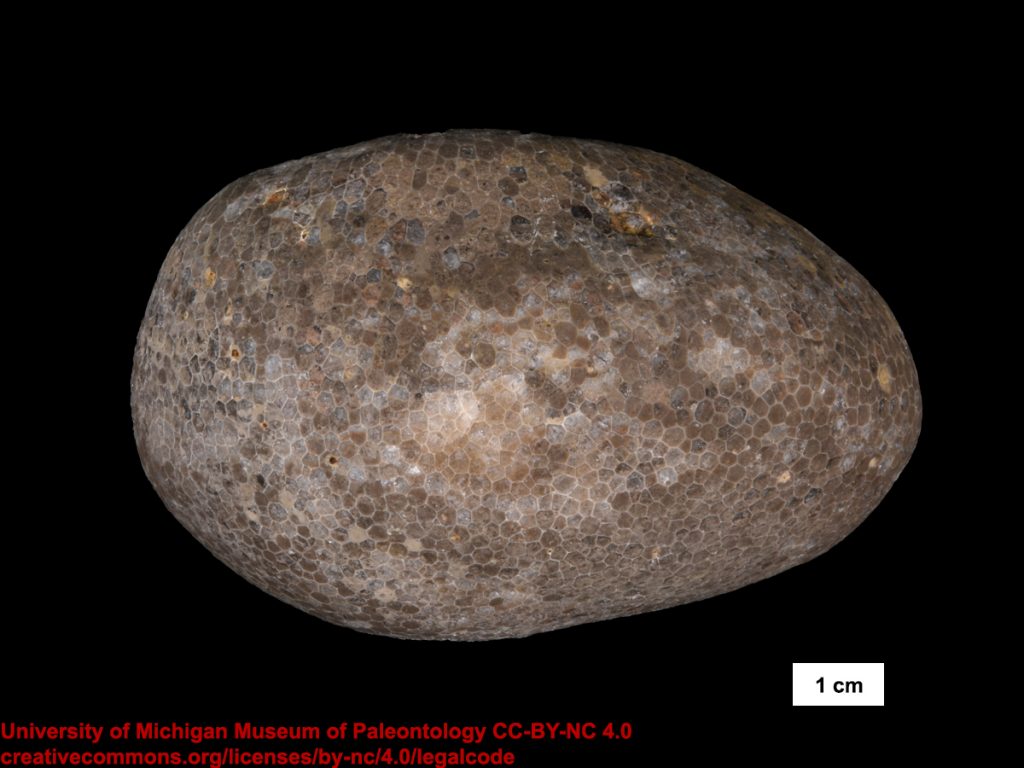
Sometimes, Charlevoix stone fossils have a smooth appearance, with the honeycomb type cavities being filled with minerals and rock.
Horn Coral (Heterophrentis ferronensis)
In Michigan, horn corals can be found in rocks ranging from the Ordovician to Mississippian (485 – 323 million years ago).
Rugose corals are extinct corals that were solitary or colonial. Solitary rugose corals are sometimes referred to as ‘horn corals,’ as they resemble a bull’s horns. Fossils of colonial rugose corals are frequently found in Michigan, more commonly known as Petoskey stones.
Identification Tips
1. Conical or horn-like shape
2. Radiating septa (wagon-wheel like appearance)
3. Gentle curve to the horn shape
See a 3D Model of a Horn Coral
Doesn’t look exactly like what you found? Explore more 3D models of related animals (Order Rugosa, Phylum Cnidaria).

Sea Sponge (Stromatopora)
In Michigan, sea sponges can be found in rocks ranging from the Ordovician to Mississippian (485 – 323 million years ago) but are most commonly found in Devonian rock (about 390 million years ago).
Sea sponges come in many shapes and sizes and throughout time they built their skeletons out of different elements: silica, calcium, or a protein. Common in Michigan are stromatoporoids, which have a special shape that looks almost like it grows in layers or mats.
Identification Tips
1. Bumps on exterior are called mammelons and are diagnostic for stromatoporoids
2. Horizontal layers (lamellae) that also have a vertical component (pillars)
See a 3D Model of a Sea Sponge
Doesn’t look exactly like what you found? Explore more 3D models of related animals (Phylum Porifera).

Branching Coral (Thamnoptychia silicensis)
In Michigan, branching corals can be found in rocks ranging from the Ordovician to Mississippian (485 – 323 million years ago).
Branching corals are just that – they branch instead of growing in mounds or as solitary polyps.
Identification Tips
1. Branching structure with corallites (polyp openings)
2. Skeleton between corallites (corallum) is not often textured or filled with openings like on bryozoans.
See a 3D Model of a Branch Coral
Doesn’t look exactly like what you found? Explore more 3D models of related animals (Phylum Porifera).




